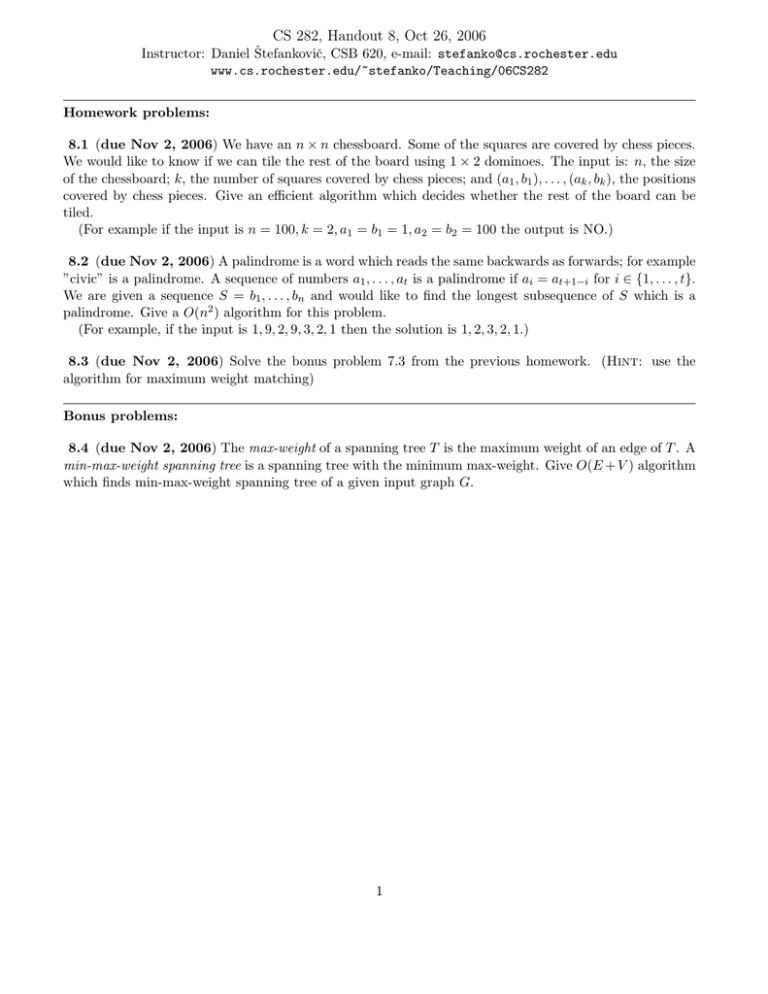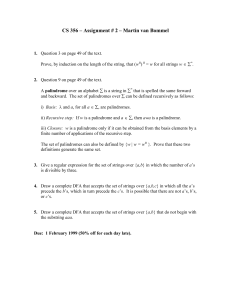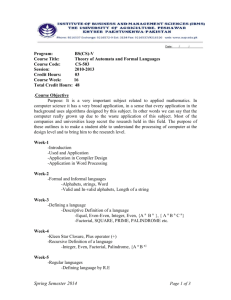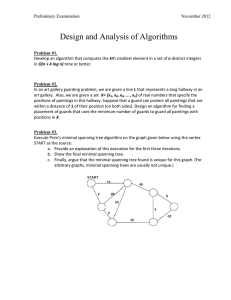CS 282, Handout 8, Oct 26, 2006
advertisement

CS 282, Handout 8, Oct 26, 2006
Instructor: Daniel Štefankovič, CSB 620, e-mail: stefanko@cs.rochester.edu
www.cs.rochester.edu/~stefanko/Teaching/06CS282
Homework problems:
8.1 (due Nov 2, 2006) We have an n × n chessboard. Some of the squares are covered by chess pieces.
We would like to know if we can tile the rest of the board using 1 × 2 dominoes. The input is: n, the size
of the chessboard; k, the number of squares covered by chess pieces; and (a1 , b1 ), . . . , (ak , bk ), the positions
covered by chess pieces. Give an efficient algorithm which decides whether the rest of the board can be
tiled.
(For example if the input is n = 100, k = 2, a1 = b1 = 1, a2 = b2 = 100 the output is NO.)
8.2 (due Nov 2, 2006) A palindrome is a word which reads the same backwards as forwards; for example
”civic” is a palindrome. A sequence of numbers a1 , . . . , at is a palindrome if ai = at+1−i for i ∈ {1, . . . , t}.
We are given a sequence S = b1 , . . . , bn and would like to find the longest subsequence of S which is a
palindrome. Give a O(n2 ) algorithm for this problem.
(For example, if the input is 1, 9, 2, 9, 3, 2, 1 then the solution is 1, 2, 3, 2, 1.)
8.3 (due Nov 2, 2006) Solve the bonus problem 7.3 from the previous homework. (Hint: use the
algorithm for maximum weight matching)
Bonus problems:
8.4 (due Nov 2, 2006) The max-weight of a spanning tree T is the maximum weight of an edge of T . A
min-max-weight spanning tree is a spanning tree with the minimum max-weight. Give O(E + V ) algorithm
which finds min-max-weight spanning tree of a given input graph G.
1


![Problem Wk.1.4.7: Palindrome [Optional]](http://s2.studylib.net/store/data/013337925_1-eef253c94fd8fc766c04f2a39f7a21c0-300x300.png)


